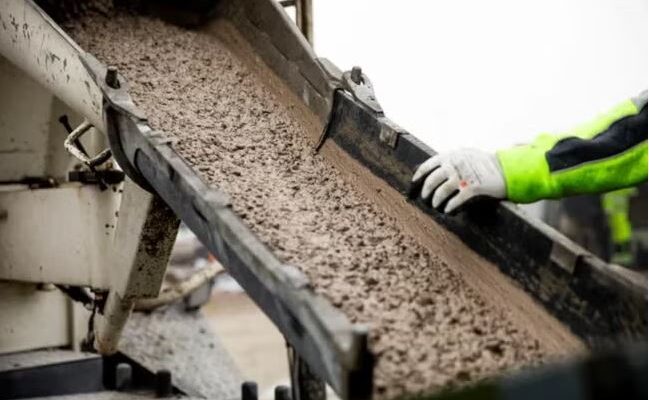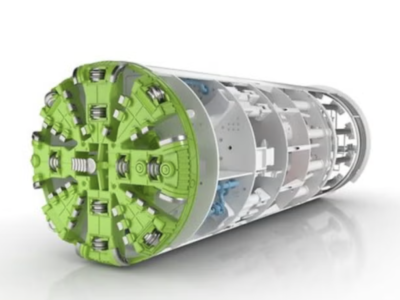
While participating in a trial casting of concrete with a reduced carbon footprint, the Fehmarnbelt project’s contractor consortium, Femern Link Contractors (FLC), is conducting the trial casting using a new type of concrete at a specially allocated area at the tunnel construction site in Rødbyhavn.
As part of a larger collaboration on the concrete, this trial is known as Calliste in which the Fehmarnbelt developer Femern A/S, is involved, together with Aalborg Portland, the Technological Institute, several universities, concrete suppliers and public and private developers.
According to Kim Smedegaard Andersen, deputy technical director at the Fehmarnbelt project: “We have strict requirements as regards strength and durability for the construction of mega projects, such as the Fehmarnbelt tunnel, and this is of particular relevance when building in the marine environment. We’re also firmly focused on reducing the CO2 footprint from our construction project through new technologies and we want to give additional impetus to the development of concrete of the future.”
By replacing some of the clinker content in the cement with specially treated clay and limestone, a cement known as Futurecem, which can decrease the CO2 footprint from concrete production by 25% compared to traditional concrete has been developed by Aalborg Portland, a sub-supplier of cement to the Fehmarnbelt tunnel. With the aim of advancing this technology further, the Calliste collaboration is conducting applied research, whereas the aim of the collaboration is to halve the need for cement in concrete while maintaining high strength and durability.
Pernille Nyegaard, centre project manager at the Technological Institute, said: “The trial casting was the first time a concrete had been used where approximately 50% of cement clinker had been replaced by a special combination of clay and limestone. This significantly reduces the CO2 footprint compared to the types of cement normally used in Denmark. This is the first time for us to cast with the new type of concrete on this scale, which means that we can investigate the concrete’s durability. The trial is important to demonstrate how the concrete performs in a real traffic environment with frost and salting.”
If the Calliste project achieves the expected results, it will open the possibility for it to be used in future construction projects, where concrete production carries a heavy CO2 burden.
Considering that decreasing concrete’s environmental impact is becoming a key focus for infrastructure and underground construction projects, in the previous year the Cross Yarra Partnership working Sydney’s Metro Tunnel trialled a crushed glass concrete mix in the construction of temporary suspended concrete slabs, producing a concrete mix of equal strength and quality to traditional concrete. The trial demonstrated that 25% of virgin sand used in concrete mix coud be replaced with recycled crushed glass, reducing reliance on virgin sand and diverting waste glass from landfill.
















